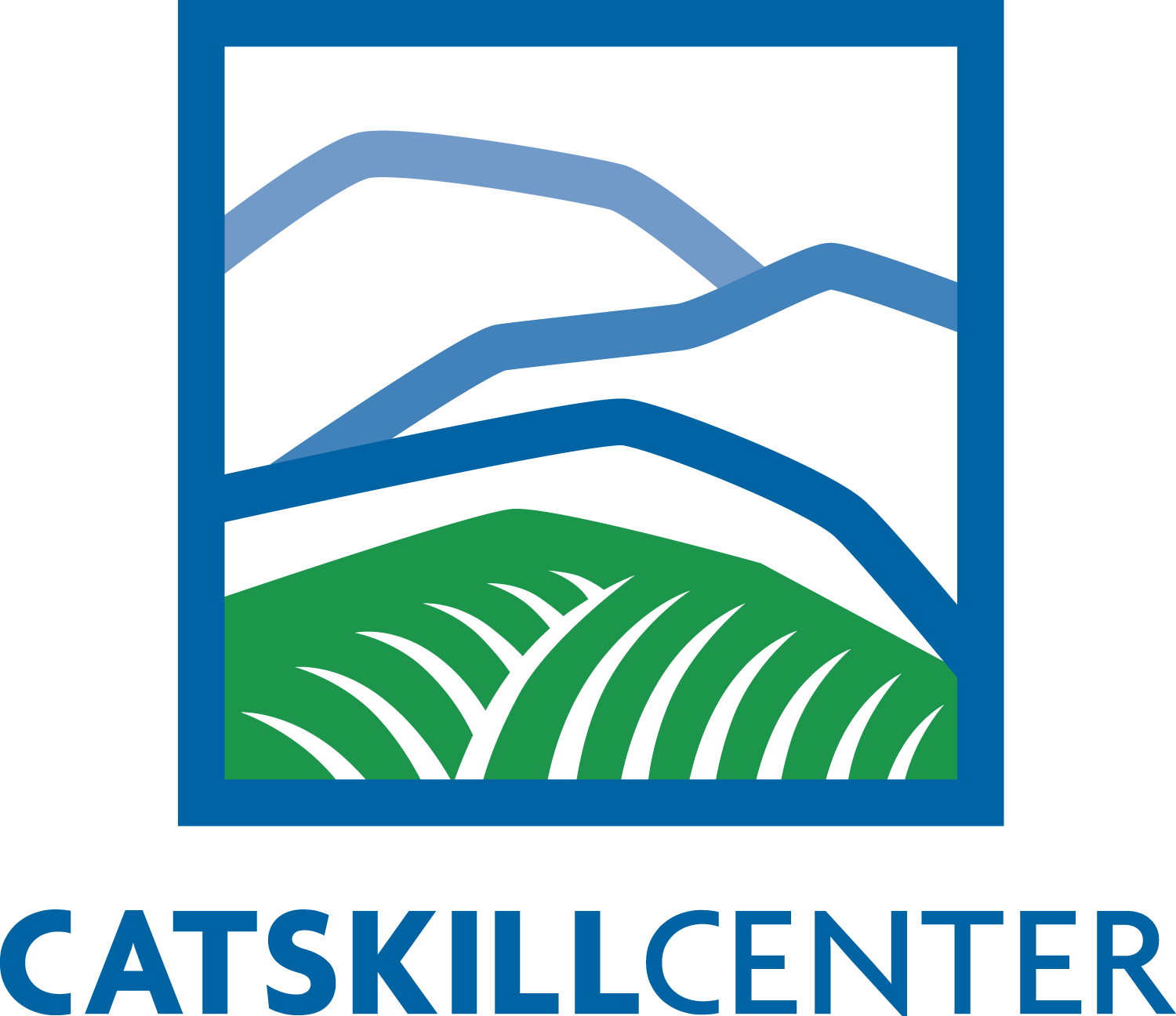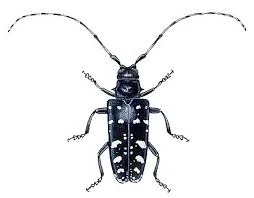The Catskill Regional Invasive Species Partnership (CRISP)
CRISP is a collaborative of organizations and agencies that work cooperatively to promote prevention, early detection/rapid response, and control of invasive species to protect natural resources, the economy, and human health.
Funding
Each year, in addition to conducting public outreach and management activities, CRISP supports research regarding extent, ecological impact and effective controls of priority invasive species. Specifically, CRISP has funded projects that focus on prevention, early detection, invasive species identification and control, and surveys for invasive species.
One of eight Partnerships for Regional Invasive Species Management (PRISM) in New York State, CRISP covers all of Otsego, Schoharie, and Delaware Counties; most of Ulster, Greene and Sullivan Counties; and a small part of Orange County. The partnership is coordinated by the Catskill Center for Conservation and Development through a contract with the New York State Department of Environmental Conservation.
What are invasive species and why should we take action?
Invasive species are species that are not native to a particular ecosystem and have the ability to cause significant harm to our environment, economy or human health. They affect us all and threaten our treasured waters, lands, food production, and even human health. New York’s lands, waters, and agricultural resources are worth protecting. Invasive species are costly to our communities and society. Preventing the introduction and spread of invasive species is far more cost-effective than trying to remove them once they have become established.
Examples:
Northern snakehead, a predatory fish from Asia, are voracious eaters that have the potential to reduce or even eliminate native fish populations and alter aquatic communities. Municipalities which rely on tourist dollars from recreational fishing may suffer losses should northern snakeheads continue to invade New York waters.
Spotted lanternfly is an invasive pest from Asia that primarily feeds on tree of heaven (Ailanthus altissima) but can also feed on a wide variety of plants such as grapevine, hops, maple, walnut, fruit trees and others. This insect could impact New York’s forests as well as the agricultural and tourism industries.
Hydrilla is one of the most difficult aquatic invasive species to control and eradicate in the United States. Infestations can have negative impacts on recreation, tourism and aquatic ecosystems.
Slender false brome is an invasive grass that can outcompete existing vegetation including threatened and endangered species. It can even prevent tree seedling establishment. It can also harm populations of mammals, insects, lizards, snakes and song birds by altering food sources.
Oak wilt is a fungal disease that kills thousands of oaks in the United States each year. All oaks are susceptible to the fungus, but the red oak group often die much faster than white oaks.
What can NY’s citizens do about invasive species?
The good news is that everyone can take simple measures to prevent the spread of invasive species:
Clean, drain, and dry all watercraft, trailers and gear after visiting a waterbody.
Buy and burn local firewood.
Use native plants in gardening and landscaping.
Be a responsible aquarium and exotic pet owner—never dump or release species into the wild.
Help detect invasive species by reporting findings to the iMap Invasives online database.
Get involved with your local PRISM (like the Catskill Regional Invasive Species Partnership) –they are groups of organizations and individuals working together to prevent and manage invasive species.
The Catskill Center hosts and coordinates a cooperative partnership of diverse stakeholders throughout the Catskill region called the Catskill Regional Invasive Species Partnership (CRISP).
CRISP is one of eight Partnerships for Regional Invasive Species Management (PRISMs) in New York funded by the Environmental Protection Fund.
CRISP's mission is to promote prevention, early detection and rapid response, and in limited areas/cases, broader control of invasive species to protect natural resources. In addition to conducting public outreach and management activities, CRISP will support research on ecological impact and effective controls of invasive species.
NEWS UPDATE: EMERALD ASH BORER (EAB) CONFIRMED - ARKVILLE AND HIGHMOUNT, NY
Have you spotted an invasive? Not sure?
Contact Dsnider@catskillcenter.org
In the news
BIOLOGICAL CONTROLs
EMERALD ASH BORER
Joining forces with USDA-APHIS and New York State Department of Agriculture and Markets, CRISP has entered the bold new world of biological control. To tackle emerald ash borer (EAB) three species of tiny stingless wasps are currently being released at several carefully selected sites experiencing high rates of ash mortality due to EAB. The wasps, known as parasitoids, lay their eggs in EAB larvae, killing the insect before it can pupate and emerge from the tree. These control agents, which only target emerald ash borer, are also currently being released in Canada and Michigan, where EAB was first discovered over a decade ago.
Hemlock Wooly Adelgid
The hemlock woolly adelgid (Adelges tsugae), a relative of the aphid, is a destructive invasive species in the Catskills. This native of Asia has been spreading through the Hudson Valley and Catskills since the late 1980’s. The adelgid causes Hemlock trees to loose new shoots, and is usually fatal. The wind, birds, other wildlife and the movement of infested host material (wood) by humans are all factors in the dispersion of the adelgid. There is now hope that Hemlock Wooly Adelgid can be put in check using biological control. Small Laricobius beetles are native to the Pacific Northwest region of the United States. They are the best known predators of hemlock wooly adelgid. Laricobius were approved by the USDA for field release in 2000. Biological control does not require chemicals to be introduced into the environment and, once established, biological control agents can be a long-term and sustainable solution to invasive species.
CRISP recently began a release of 500 Laricobius predators. These predators were released at Mine Kill State Park. Mine Kill State Park was selected for release as the stands of hemlock there are still healthy, and in the very early stages of infestation, so the predators will have plenty of adelgids to eat. With this initial collection of 500 bugs, CRISP released about 150-200 per tree and will continue to monitor them over the coming years to make sure they are establishing. WANT TO KNOW MORE? Check out our FACT SHEET.
Control of Noxious Weeds
In cooperation with the New York State Department of Environmental Conservation, CRISP manages all known populations of giant hogweed (Heracleum mantegazzianum) in the Catskills. Giant hogweed is a noxious invasive species which can cause blindness and painful burns. Fortunately, the species exists at low levels in the Catskills and can be effectively controlled by root cutting. Contact CRISP if you spy this dangerous weed and we will come and remove it immediately at no charge. Read more about giant hogweed here.
Taking Action: The Emerald Ash Borer
The Catskills is at the heart of the largest and fastest moving emerald ash borer (EAB) infestation in the state. In the eastern portion of our region, within only a couple of years, we can expect all large ash trees to die. CRISP offers help to communities committed to preparing for the invasion through ash inventories, tree assessments, EAB identification and workshops on ash stand management. CRISP is part of a greater effort to collect ash seed from trees in the region in order to save the genetic diversity of this important, abundant genus of trees.
Feral Swine Outbreak
Eurasian Boar (also known as feral swine) is a species that was introduced in the early 1900s to stock hunting preserves. Individuals escaped from hunting preserves and have established populations, ranging freely in at least 39 states. In New York State alone, Eurasian Boar hunting preserves are found in at least 13 counties- six of which, including Sullivan and Delaware, are now home to established, escaped breeding populations of the species. The animals have been sighted in Callicoon, Bethel, Fremont, and Hancock.
The species differs from domestic swine by having an elongate head and coarse, dark hair. The risks associated with Eurasian Boar are extensive. Boar dig in the soil to forage and decimate wetland habitats. In this way Eurasian Boars pave the way for invasive species by disturbing soils and interrupting establishment of native plants. One farmer in Delaware County, NY, sustained over $15,000 in damage when a group of Eurasian Boar ate an entire crop of seed corn in just two days.
Eurasian Boar are also vectors for over 24 infectious diseases transmissible to humans. In addition, the species carries harmful livestock diseases such as psuedorabies and swine brucellosis. Eurasian Boar have also been shown to carry both giardia and leptospirosis- bacterial infections transmitted by water contaminated by animal dung and urine.
If you believe you have seen this species, exercise caution: animals can be very aggressive. Report it to CRISP by calling at 845-586-2611 or mmarquand@catskillcenter.org.
Education and Outreach
Each year CRISP trains over 1,000 people in the Catskills how to identify, report, and manage a variety of invasive species. Programs include workshops on how to control barberry in the home woodlot, how to identify the top ten invaders of the region, how to prevent the spread of aquatic invasive species, and how to manage ash trees infested by the emerald ash borer. CRISP provides one stop shopping for all your invasive species needs and can supply a variety of outreach materials to any individual or group eager to learn more. Check out our youtube videos online and get started on your invasive species identification!
Success Stories
Watershed Steward Success!
Read about Eric Coe, CRISP’s Watershed Steward extraordinaire! Learn how he stopped water chestnut, and prevented an invasion on Canadarago Lake (at a public boat launch three miles south of Richfield Springs), which would have taken years to eradicate! Read more about it here.
Feral Swine Legislation
Gov. Andrew Cuomo signed into law legislation prohibiting the importation, possession, sale or release of Eurasian boar, wild pigs and their hybrids. The law phases out high-fenced shooting enclosures and breeders from stocking these animals by 2015, and immediately prohibits importation or release of the animals. Violators would be fined $500 to more than $1,000. As of April, 2014, it is also illegal to hunt wild boar in the state of New York. More information on reasoning and exceptions can be found at the DEC website.
A. 3767/S. 5733, sponsored by Assemblymember Deborah Glick, D-New York, and Sen. Betty Little, R-Queensbury, was supported by The Catskill Center and CRISP due to concerns about the impacts of feral swine on native wildlife populations and agriculture.











